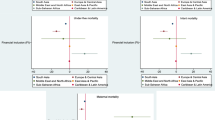Abstract
This paper quantifies the importance of the various determinants of life expectancy for international cartels active throughout this century. I explain cartels' optimal duration as a function of market structure and demand growth and estimate the associated parameters recognizing that durability cannot be negative. According to the results, increases in either market shares or cartel concentration prolong life expectancy. Faster demand growth shortens cartel durability but this effect is not reliable. I also find that growth effects are sensitive to both the period of activity and the country coverage.
Similar content being viewed by others
References
Amemiya, Takeshi (1973) ‘Regression Analysis when the Variance of the Dependent Variable is Proportional to the Square of its Expectation’,Journal of the American Statistical Association,68, 928–934.
Baxter, Nevius, and John Cragg (1970) ‘Corporate Choice Among Long-Term Financing Instruments’,Review of Economics and Statistics,52, 225–235.
Dick, Andrew (1993) ‘Information, Enforcement Costs, and Cartel Stability: An Empirical Investigation’, UCLA, mimeo.
Eckbo, Paul (1976)The Future of the World Oil Market. Cambridge, MA: Ballinger.
Geroski, Paul (1988) ‘In Pursuit of Monopoly Power: Recent Quantitative Work in Industrial Economics,’Journal of Applied Econometrics,3, 107–123.
Green, Edward, and Robert Porter (1984) ‘Noncooperative Collusion Under Imperfect Price Information’,Econometrica,52, 87–100.
Griffin, James (1989) ‘Previous Cartel Experience: Any Lessons for OPEC?’, in Lawrence Klein and Jaime Marquez, eds,Economics in Theory and Practice: An Eclectic Approach. Dordrecht: Kluwer Academic Publishers.
Jacquemin, Alexis, Tsuruhiko Nambu, and Isabelle Dewez (1981) ‘A Dynamic Analysis of Export Cartels: The Japanese Case’,Economic Journal,91, 685–696.
Jacquemin, Alexis and Margaret Slade (1989) ‘Cartels, Collusion, and Horizontal Merger’, in Richard Schmalensee and Robert Willig, eds,Handbook of Industrial Organization, vol. II. Amsterdam: North-Holland.
Jarque, Carlos, and Anil Bera (1980) ‘Efficient Tests for Normality, Homoscedasticity, and Serial Independence of Regression Residuals’,Economic Letters,7, 149–160.
Liesner, Thelma (1989)One Hundred Years of Economic Statistics. New York: The Economist.
Miller, John (1962)Competition, Cartels, and Their Regulation. Amsterdam: North-Holland.
OECD (1974)Export Cartels: Report of the Committee of Experts on Restrictive Business Practices. Paris: Organization for Economic Co-operation and Development.
Porter, Robert (1983) ‘A Study of Cartel-Stability: The Joint Executive Committee, 1880–1886’,Bell Journal of Economics Autumn, 301–314.
Rottemberg, Julio, and Garth Saloner (1986) ‘A Supergame-Theoretic Model of Price Wars During Booms’,American Economic Review,76, 390–407.
Scherer, Frederic, and David Ross (1990)Industrial Market Structure and Economic Performance. Boston: Houghton Mifflin Company.
Schmalensee, Richard (1989) ‘Studies of Structure and Performance’, in Richard Schmalensee and Robert Willig, eds,Handbook of Industrial Organization, vol. II. Amsterdam: North-Holland.
Slade, Margaret (1989) ‘Price Wars in Price-Setting Supergames’,Economica,56, 295–310.
Suslow, Valerie (1991) ‘Cartel Contract Duration: Empirical Evidence from International Cartels’,RAND Journal of Economics, forthcoming.
Tirole, Jean (1989)The Theory of Industrial Organization. Cambridge, MA: MIT Press.
U.S. Department of Commerce (1989)Historical Statistics of the United States: Colonial Times to 1970. New York: Kraus International.
Weiss, Leonard (1971) ‘Quantitative Studies of Industrial Organization’, in Michael Intriligator, ed,Frontiers of Quantitative Economics. Amsterdam: North-Holland.
Author information
Authors and Affiliations
Additional information
The calculations in this paper use LIMDEP version 5.0. I am grateful to participants in seminars at the Federal Reserve Board and the U.S. International Trade Commission; to Alexander David, Jon Faust, Michael Gibson, William Greene, James Griffin, William Helkie, Dale Henderson, John Irons, Doug Irwin, Michael Leahy, Matthew Pritsker, Stephen Salant, and Janice Shack-Marquez for several suggestions. I also received very useful comments from two anonymous referees. The views expressed in this paper are solely the responsibility of the author and should not be interpreted as reflecting those of the Board of Governors of the Federal Reserve System or other members of its staff.
Rights and permissions
About this article
Cite this article
Marquez, J. Life expectancy of international cartels: An empirical analysis. Rev Ind Organ 9, 331–341 (1994). https://doi.org/10.1007/BF01025729
Issue Date:
DOI: https://doi.org/10.1007/BF01025729




